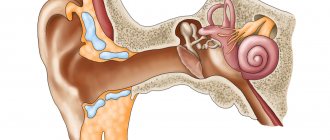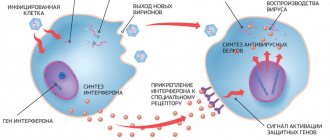There are many reasons that contribute to the persistence of inflammation in the nasopharyngeal mucosa after the patient has seemingly recovered. In this matter, everything depends on the level of immune protection, working conditions and the presence of chronic infection in the ENT organs. How to cure a persistent runny nose in an adult? What drugs will help get rid of rhinorrhea in a short time?
First, let's look at what could cause it:
- deformed nasal septum, developmental anomalies in this area, traumatic changes in the structure of the nose. Any of the listed factors can impair the passage of air through the nasopharynx, disrupt the ventilation of the paranasal sinuses, which leads to the persistence of infection and inflammation;
- an allergic factor whose effect lasts for several months. This could be an allergy to pollen, household chemicals, cosmetics, perfumes or chemicals. Without stopping contact with the allergen, rhinitis cannot be cured.
If a person is allergic to plant pollen, it is recommended to begin preventive treatment 2 weeks before the start of the flowering period.
- vasomotor rhinitis - associated with dysregulation of the tone of the vascular wall. As a result, blood vessels lose the ability to adequately respond to environmental changes, as well as the influence of endogenous factors;
- infectious runny nose - persists as long as pathogenic microbes are present in the nasopharynx. Often, chronic inflammation is observed with a weakened immune system, the presence of an infection in the throat, adenoids, improper treatment of the acute period of rhinitis, or the addition of a secondary bacterial infection against the background of a viral disease;
- frequent colds and hypothermia lead to the constant presence of rhinorrhea;
- unfavorable environmental factors. This clause applies to workers with hazardous working conditions, as well as people living near industrial zones and major highways.
Symptomatic features
The type of clinical signs of rhinitis depends on the cause that caused the disease. A person is often worried about:
Typically, upon examination, cracks, hyperemia and peeling of the skin of the wings of the nose are detected. With hypertrophic rhinitis, thickening of the mucosa is observed, with atrophic rhinitis, thinning. Frequent trauma to the mucous membrane leads to the formation of scars.
People with vasomotor rhinitis notice periodic nasal congestion, sometimes in one nasal passage. Symptoms of the disease intensify when changing body position, inhaling cold air or physical activity.
Traditional treatment
How to treat a runny nose with pharmaceutical drugs? The therapeutic approach depends on the form of chronic rhinitis:
The main task in treating a runny nose is to eliminate its cause (allergen, infection, harmful working conditions).
To improve the outflow of mucus from the paranasal sinuses, as well as to prevent the development of sinusitis, Sinupret Forte can be used. This is a herbal preparation that must be taken three times a day without chewing the tablet.
In some cases, a course of antibiotic therapy is required. Depending on the type of pathogenic microorganisms that support chronic inflammation in the nasopharynx, a specific antibacterial drug is selected. Before this, a microscopic examination of a smear from the nasal cavities is carried out and the nasal discharge is cultured on special media. Using an antibiogram, it is possible to determine the sensitivity of microbes to drugs.
Treatment of persistent runny nose
The first step in the fight against chronic runny nose is to eliminate its root cause.
If it is an allergy, you need to identify the substance that your immune system does not like and remove it from your environment.
For congenital or acquired pathologies of the nasal structure, surgical operations are indicated.
During the period of exacerbation of rhinitis or sinusitis, it is necessary to remove too strong manifestations of the disease. Depending on the nature of the disease, antihistamines, antibiotics, vasoconstrictors and other drugs are used at this stage. Why is a constant runny nose so unpleasant - due to nasal congestion and the inability to breathe normally. To remove mucus from the nasal passages and sinuses, rinse with a saline solution, preferably with a pharmaceutical preparation containing sea water, for example, Aqualor.
This procedure must be continued after the exacerbation has passed.
Traditional therapy
What to do if your runny nose doesn't go away? Constantly present nasal discharge and congestion interfere with a person’s communication and work, reducing the quality of life.
At home, you can prepare medications that are widely used in the treatment of chronic rhinorrhea:
- saline solution for rinsing the nasal cavities. Preparation does not require material costs or much effort. It is enough to dissolve 10 g of table or sea salt in 480 ml of warm water and add 4 drops of iodine;
- aloe juice can be used as monotherapy or combined with other medications, such as honey or garlic juice;
- inhalations can be carried out using chopped onions, garlic or horseradish;
- carrot or beet juice is used to rinse the nose;
- oils (essential eucalyptus, pine, olive) can be used for inhalation, preparation of drops or medicines for lubricating the nasal mucosa.
To avoid chronicity of the inflammatory process, it is necessary to promptly treat an acute runny nose and consult a doctor. To maintain an optimal level of immune protection, you need to eat right, avoid stress, hypothermia, and do not forget about trips to the sea coast.
A constant runny nose and nasal congestion can act both as an independent disease and as symptoms accompanying any ailment in the body. An otolaryngologist is able to understand the situation where rhinitis came from and why it does not disappear. There are many reasons that cause constant nasal discharge and lead to the accumulation of secretions in the paranasal sinuses.
One of the most common causes of a persistent runny nose is incompletely cured acute rhinitis. In addition, the following factors can provoke the appearance of the disease:
- abnormal structure of the nasal septum;
- environmental irritants - dust, odors, harmful fumes, etc.;
- tumors of the nasal passages;
- viral infections;
- cold weather;
- temperature changes;
- allergies;
- hormonal changes in the body;
- vasomotor rhinitis;
- tobacco smoke;
- proliferation of adenoids;
- nasal injuries;
- foreign bodies in the nasal passages;
- spicy food;
- taking certain medications, etc.
Constant nasal congestion and runny nose can affect not only adults, but also children. In children, malaise manifests itself, in most cases, in the autumn-winter period, when the child's body's defenses are weakened and poorly resist the onslaught of infections and pathogenic microbes.
Types of persistent rhinitis
Persistent runny nose and nasal congestion in an adult
may have two stages of manifestation - exacerbation during certain periods and a stage of remission. When conditions favorable for disease occur, such as decreased immunity, constant fatigue, hypothermia, runny nose and congestion make themselves felt with corresponding symptoms.
In order to select adequate treatment, it is important to establish the real cause of the disease. Depending on the cause, persistent runny nose is divided into the following categories: atrophic, hypertrophic, catarrhal, allergic and vasomotor rhinitis.
Atrophic rhinitis
With atrophic rhinitis, thinning of the mucous membranes of the nasal area occurs, as a result of which viscous, thick mucus is released from the nose, which turns into crusts when it dries. A large accumulation of them can lead to difficulty breathing and even impaired sense of smell. Atrophic rhinitis is also characterized by dry throat, itching and other symptoms.
Hypertrophic rhinitis
Chronic hypertrophic rhinitis is characterized by thickening and proliferation of the mucous membranes of the nasal area, called hyperplasia. The increased volume of the mucous membrane interferes with normal breathing or simply makes it impossible. In this case, a person has to breathe through his mouth. Conjunctivitis, inflammation of the lacrimal sac, and frequent lacrimation may occur.
Catarrhal rhinitis
A constant runny nose and nasal congestion in an adult can become a manifestation of catarrhal rhinitis. This malaise appears, for example, against the background of inhaling frosty air. Stuffiness and runny nose appear and disappear. When the illness worsens, purulent discharge is possible; during remission, the discharge is clear and moderate.
Allergic rhinitis
Watery discharge, itching and burning in the nose, sneezing - these are the main signs of an allergic rhinitis. It can occur year-round or from time to time, depending on the presence of nearby allergens. Allergic rhinitis is also called hay fever - it is a seasonal rhinitis that occurs due to inhalation of flowering shrubs, trees or pollen.
Vasomotor rhinitis
Vasomotor chronic runny nose can be identified by three signs - difficulty breathing, copious watery or mucous discharge and frequent, paroxysmal sneezing. They usually appear against the background of stress, decreased immunity, temperature changes, after waking up or a jump in blood pressure. This is due to disturbances in the nervous autonomic system. Often, malaise causes sleep disturbances and a deterioration in general condition.
Chronic runny nose and nasal congestion
A runny nose is not always a sign of a cold. If this condition bothers a person constantly, then they speak of a chronic form of the disease. It is caused by a specific and nonspecific inflammatory process of the mucous membrane, and sometimes affects the bone walls of the nasal cavity. The nasal mucosa is lined with a large number of blood vessels. As a result of a constant runny nose, blood circulation in this area is disrupted, which causes blood stagnation. As a result of this, the nasal mucosa swells, the nasal passages narrow, and the person always feels difficulty breathing through the nose. The inflammatory process is also manifested by the release of exudate or otherwise mucus. A constant runny nose and associated frequent nasal congestion develop as a result of the following reasons:
- hereditary predisposition;
- allergy;
- changes in hormonal levels;
- systematic recurrences of acute rhinitis;
- rhinitis not treated in a timely manner;
- upper respiratory tract infection;
- deviated nasal septum;
- metabolic disorder;
- entry of a foreign body into the nasal cavity;
- regular inhalation of too hot or cold, dry and polluted air;
- excessive use of nasal vasoconstrictors.
In ENT practice, it is customary to distinguish several types of chronic rhinitis, the causes and symptoms of which will be different in each case. These are catarrhal, vasomotor, allergic, hypertrophic and atrophic types of rhinitis. Catarrhal rhinitis is usually understood as a common runny nose, which happens to every person. If it is not treated correctly, there is a risk of it becoming chronic. In this case, exacerbations will constantly occur during the cold season. Vasomotor rhinitis - this disease is caused by the fact that blood vessels become sluggish, their tone decreases, as a result of which they lose the ability to narrow. Any irritants that reflexively affect the mucous membrane provoke a strong reaction. This could be an unpleasant odor, cold or too hot air, tobacco smoke, etc. In this case, the person immediately experiences tearing, nasal discharge, and breathing becomes difficult. Vasomotor rhinitis is not associated with an inflammatory process. Its source lies in the dysfunction of the autonomic nervous system. Therefore, it is characterized by the spontaneity of attacks: symptoms appear immediately after exposure to any irritating factors. In the allergic form of chronic runny nose, nasal congestion and watery discharge are caused by exposure to allergens:
- dust;
- pet hair;
- some food products;
- plant pollen and fungal spores;
- household mites.
This type of runny nose is characterized by all the symptoms of rhinitis, including burning and itching in the nose. A chronic course is also typical for hypertrophic rhinitis. It occurs under the influence of the following factors:
- decreased immunity;
- upper respiratory tract diseases;
- pathogenic bacteria and viruses;
- formation in the nasal cavity, such as a cyst or polyp;
- unfavorable environmental conditions.
A feature of this type of ENT pathology is the pathological proliferation of connective tissue in the nasal mucosa. It acquires a lumpy structure and becomes bright red in color. In people with hypertrophic rhinitis, speech distortion is observed - the timbre of the voice changes, the pronunciation of words is distorted. With atrophic rhinitis, the nerve endings on the mucous membrane die off. This is provoked by exposure to various viruses and infections, an imbalance of the endocrine system during puberty, a lack of vitamin D and iron, and prolonged use of vasoconstrictors in the nose. A type of atrophic rhinitis is subatrophic. In this case, dry crusts constantly form in the nasal passages. This occurs because the epithelial cells dry out and lose their ability to produce mucus. The condition is complicated by frequent nosebleeds as a result of fragility and dryness of blood vessels, as well as complete or partial distortion of the sense of smell. The latter occurs due to a disruption in signal transmission to the olfactory center of the brain.
What is the cause of constant nasal congestion without a runny nose?
Constant nasal congestion without a runny nose is a fairly common occurrence. As a rule, it is often of allergic origin and occurs when:
- cleaning premises where there is animal hair;
- ingestion of pollen from a flowering plant;
- dry air in a room or other area;
- side effects of certain medications;
- flu or cold;
- excessive consumption of drinks containing alcohol;
- cold autumn weather, etc.
Most often, malaise occurs at night, causing a person a lot of inconvenience and discomfort, preventing normal rest and sleep.
Treatment of congestion without a runny nose involves keeping the nasal passages constantly moist, resting at night on a high pillow, proper nutrition, ventilating the room before bed, rinsing the nose, etc.
A persistent runny nose for a long time or a frequent runny nose in some cases indicates the presence of an inflammatory process in the nasal passages. It often occurs due to inflamed nasal mucosa (rhinitis), but sometimes it can be due to inflammation in other tissues.
There are certain types of inflammation, manifested by an incessant runny nose. Such forms have their own causes, but sometimes their clinical picture may have different symptoms even in the presence of the same factors. Therefore, treatment should be individual, developed depending on the form and the causes that caused them.
The medical name for a persistent runny nose is chronic rhinitis. Doctors believe that a runny nose (leakage of mucus from the sinuses and its congestion) is a manifestation not only of rhinitis from a cold, but also of some other types of diseases.
Something to keep in mind! A runny nose and rhinitis are not identical concepts. So, a runny nose is sometimes a manifestation of sinusitis, but inflammation of the nasal mucosa (rhinitis) may not be observed.
Why is a constant runny nose dangerous?
A constant runny nose must be treated, and a constant runny nose in an adult and a child even more so. If you leave everything as it is, complications will develop over time in the form of the following manifestations:
- Against the background of frequent colds and constant runny nose, diseases of the throat, pharynx, respiratory tract, and lacrimal ducts appear.
- Severe headaches will begin to bother you.
- Conjunctivitis will appear.
- Heart pain will begin to bother you.
- Due to poor oxygen supply to the brain, diseases will develop in this area.
- Impaired brain function: decreased concentration and memory, learning difficulties, etc.
In addition, with a constant runny nose, a person feels constant discomfort: nasal congestion, discharge from the nasal passages, poor health, and in some cases a slight increase in body temperature. All these factors affect mood, a person becomes irritable, ability to work decreases, etc.
Remember that chronic rhinitis is much more severe than a common runny nose and is difficult to treat. Therefore, it is so important to eliminate all ENT diseases in a timely manner. Any disease can be overcome in the bud; it is more difficult to get rid of it in its advanced form.
Main prerequisites
The primary reason why a runny nose does not stop for a long time can be called the environment, that is, the presence in the air of any substances that pollute it. The air may contain, for example, microscopic particles of various tissues - microparticles from flour, small residues from insects, cereals, which, settling on the surface of the nasal mucosa, interfere with the normal functioning of the ciliated epithelium, which is responsible for removing nasal mucus. As a result, snot accumulates in the sinuses and makes you want to clear your nose.
What to do if a runny nose is caused by such a factor? It will stop if you go out into fresh air. Various particles will no longer settle on the mucous membrane of the nasal passages, and the ability of the epithelium to remove mucus will be restored after just a few blowing your nose.
In addition, the reasons may be:
- Inhalation of highly abrasive particles in the air in hazardous industries. This can happen in asbestos, cement production plants, and where wood or metal dust is present. Such particles produce microdamages on the nasal mucosa, and then wounds form in these places and an inflammatory process develops.
- A persistent runny nose in an adult can be caused by unfavorable factors such as ammonia compounds or coal dust. A child may suffer from cigarette smoke, kerosene or gasoline fumes, as well as exhaust gas from a running car engine.
- The causes of a constant runny nose in an adult can arise due to impaired architectonics of the nasal sinuses and passages, which appeared as a result of a deviated septum, the formation of ridges, as well as a fracture of the nose.
- Rhinitis may not stop due to an allergic reaction of the body. Its duration depends only on the duration and frequency of contact of such a patient with the main allergen.
- Mucous fluid leaking from the nose may indicate sinusitis.
- In addition to discharge from the nasal cavities, adenoiditis may impair the ability to breathe through the nose. This reason is often found in pediatric patients.
- Formation of polyps on the nasal mucosa.
- Long-term use of vasoconstrictor drops.
- Due to the entry of a foreign body into the nasal cavity, irritation of the mucous membrane occurs, and then a chronic inflammatory process begins.
- Frequent diseases of the nasal cavity, characterized by an inflammatory process.
- The causes of a persistent runny nose may be due to unsuccessful surgical interventions in the past. When the lower part of the nasal concha is removed, atrophy of the entire mucous membrane occurs. This manifestation is typical for adult patients.
- If hormonal regulation is disrupted, a permanent runny nose may develop. This sometimes occurs in pregnant women or women during menopause
But, often, a constant runny nose appears simultaneously for several reasons. For example, if the nasal septum is deviated, a runny nose may not begin, but if you have to breathe dry air with a high content of dust, this will lead to dysfunction of the nasal mucosa. And with the constant manifestation of allergies, due to the constant use of decongestants, the patient will have increased stress on the mucous membrane, which will ultimately lead to atrophy of epithelial tissue.
Viral and bacterial infectious diseases very rarely cause chronic disease and inflammation of the mucous membrane. Thus, after infection with Klebsiella ozena, atrophic rhinitis may develop. And with sinusitis, you can almost always find a large variety of microorganisms. However, infectious inflammations (including acute respiratory viral infections) occur much faster.
In children, rhinitis of an infectious nature can begin one after another, creating the impression of an ongoing disease.
Means and methods of treatment
The main task is to relieve swelling and inflammation, liquefy secretions, and remove them from the nasal passages.
Oil drops
At the first stage of a runny nose, the nose is stuffy due to severe swelling, there is a feeling of fullness and burning in the bridge of the nose, and there is almost no discharge. Vasoconstrictor drugs (Nazol, Nazivin, Galazolin) relieve symptoms, but do not have a therapeutic effect. In some cases, they can even cause nosebleeds. You can use them occasionally if there is an objective need to quickly ease your breathing.
Treatment is best carried out with oil-based drops: Pinosol, Kameton, Pinovit, Vitaon, Sanusan, Eucasept. The composition includes natural oils of coniferous plants, which have an antibacterial and anti-inflammatory effect, as well as eucalyptus, mint, sea buckthorn oil, and vitamins. Such drugs act a little slower than vasoconstrictors, but, unlike them, they have a therapeutic effect and do not dry out the mucous membrane.
Important: oil-based drops should not be used if you are prone to allergies. It is also necessary to follow the dosage indicated in the instructions for the drug. Too much oil can cause lung problems.
Bactroban nasal ointment will help treat a severe runny nose with purulent discharge.
Nasal rinsing
When oil-based drops provoke the release of mucus, it is necessary to remove it in a timely manner, best by washing. For this, special seawater-based products are used:
- Aquamaris;
- Aqualor;
- Dolphin;
- Quicks;
- Otrivin sea;
- No-salt;
- Marimer;
- Morenasal;
- Humer.
They are easy to use: just irrigate the nasal passages, then clear them of mucus.
You can also use regular saline solution or prepare a rinse yourself: dissolve 1/2 teaspoon of sea or regular iodized salt in a glass of warm water.
A small teapot or syringe is usually used as an aid.
Washing technique:
- Draw up the solution with a syringe and carefully pour it into the nostril. It is better to orient the jet along the lower wall of the nose, since the area at the top is very sensitive;
- breathe calmly for 1-2 minutes (during this time the mucus will dissolve) and blow your nose.
Important: you should not suck the solution from the container or palm, as there is a risk of it getting into the maxillary sinuses (this can cause inflammation).
Rinsing with a teapot: lean to the side and carefully pour the solution from the spout into the upper nostril. Liquid should flow out from the bottom.
These procedures cleanse the mucous membrane of pathogenic organisms and secretions, and also improve the functioning of the epithelial cilia. If you perform these manipulations 3-4 times a day, you can cure even a severe runny nose in an adult and a child in 2-4 days.
Important: rinsing is also very effective in the treatment of vasomotor rhinitis and in getting rid of “naphthyzine addiction.”
Antiviral and antibacterial drugs
Antiviral agents are created on the basis of interferons - proteins that are friendly to the human body, helping to set up the immune system to fight infections. These include: drops “Grippferon”, “Nazoferon”, suppositories “Viferon”, “Kipferon”, tablets “Remantadine”, powder “Ingaron”.
Immunomodulatory drops can be used not only for a severe runny nose, but also to prevent infection during epidemics or when visiting public places.
Antibacterial drugs include Bioparox, Framycetin, Fusafyungin sprays, nasal drops and Mupirocin ointment.
Separately, it is worth highlighting the nasal remedy “Derinat”, which has antiviral and antibacterial effects, and also has an immunostimulating effect. The drug can be used for a long time.
Signs by which you can recognize the type of infection:
- viruses provoke the separation of clear mucus, and bacteria usually produce a cloudy secretion with a greenish or yellowish tint;
- the viral infection is not limited to the nasal passages. It affects the throat and can go down into the bronchi, causing a cough. There is general weakness, loss of appetite, muscle aches;
- bacterial runny nose does not cause a significant increase in body temperature;
- The viral infection develops quickly, but the illness does not last long.
Homeopathy
A severe runny nose can be cured with homeopathic remedies. However, their effect on each organism is individual. In some cases, monotherapy may not be useful.
In pharmacies you can mainly find two drugs: Euphorbium compositum drops and Edas-131. These drugs have an anti-inflammatory effect, stop allergic processes, promote the regeneration of the mucous tissues of the nasal passages and do not dry them out. They also do not cause irritation or vasoconstriction. The effect may occur only on the third day of use, but will be stable and progressive.
Varieties of forms and symptoms
Diseases of the nasal cavity in acute form differ from a constant runny nose, in which the patient’s general condition remains normal. There is no obvious malaise like a cold, body temperature is kept within acceptable limits. Therefore, patients are in no hurry to go to a medical institution for qualified help, believing that this condition can go away without the intervention of doctors.
The classification of medicine divides persistent runny noses into the following forms:
- The catarrhal variety occurs due to an inflammatory process on the mucous membrane. Typically, this form occurs as a result of an allergic reaction of the body. Its main symptom is characteristic congestion of the nasal sinuses, as well as copious snot discharge and frequent sneezing. This condition worsens when the air temperature drops or when the patient sleeps. Usually the nostril located below is blocked. Instilling drops with a vasoconstrictor effect in such a patient significantly alleviates the condition. With this type, there are no irreversible consequences. But if you do not get rid of constant catarrhal inflammation, it can acquire a hypertrophic form and have certain consequences.
- If you have an allergic type, get rid of the allergen and the condition will improve.
- Limited hypertrophic rhinitis is characterized by an increase in the volume of the mucous membrane, which can grow to such a volume that it can close the nasal passages. In this case, the bone tissue and part of the periosteum are sometimes covered by hyperplasia. Due to difficulty breathing, the patient's voice changes in timbre and hearing decreases. In this case, the nose is constantly stuffy without liquid discharge. Even after using decongestant drops, breathing does not recover.
- In diffuse hyperplasia, it spreads to almost the entire mucous membrane. The remaining signs of the disease are the same as those of limited rhinitis.
- With simple atrophic rhinitis, a small part of the mucous membrane dies off, and in advanced cases, the entire mucous membrane dies off. This is characterized by the formation of large crusts and dryness in the nose.
- or ozena occurs for several reasons. Sometimes it can occur due to the ingress of pathogenic microorganisms or nervous disorders. In this case, the death of the epithelium occurs, which must be disposed of. After its removal, the nasal passages become disproportionately large.
A constant runny nose indicates the presence of a chronic inflammatory process in the patient’s nasopharynx. In most cases, the pathology is a consequence of inflammation of the nasal mucosa - rhinitis, but sometimes it can develop with inflammation of other tissues.
Medical specialists distinguish several forms in which a patient may have a prolonged runny nose. The reasons in each case may be individual, and sometimes the same set of factors in different patients can cause a disease with different symptoms and different clinical manifestations.
On a note
A persistent runny nose is the popular name for the disease, accepted in common parlance. The scientific medical name for this pathology is chronic rhinitis. Moreover, in many cases, experts consider a runny nose as one of the symptoms of rhinitis and some other diseases, meaning by this word only copious secretion of mucus from the nose. Further in the article, by the phrase “constant runny nose” we will mean constant nasal discharge and congestion that accompanies it, which in practice can be a consequence of both rhinitis and other diseases.
It is important to understand that runny nose and rhinitis are different concepts. With sinusitis, for example, purulent snot may constantly flow from the nose, but the nasal mucosa may not become inflamed at all. In this case, a runny nose will be present, but there will be no rhinitis.
Running snot from the nose is not necessarily a sign of rhinitis.
First aid
A persistent runny nose in an adult or child is characterized by an inflammatory process affecting the nasal mucosa. This condition causes prolonged mucus secretion from the sinuses, tissue irritation, headaches and other unpleasant symptoms.
Before you begin to treat the pathology with medications, any predisposing factors should be eliminated. Sometimes to improve nasal breathing it is enough:
- normalize the indoor microclimate (correct humidity and air temperature);
- get rid of “dust collectors” and other sources of allergies (remove carpets, soft toys, plants from the room);
- refuse frequent use of vasoconstrictor sprays, drops, aerosols;
- treat chronic diseases of the respiratory system.
It should be noted that a constant runny nose in children and adults can occur as a result of mechanical damage (trauma). This problem can only be eliminated surgically.
The main causes of a constant runny nose
The most common cause of a persistent runny nose is a combination of unfavorable environmental factors, and first of all, the presence of a large amount of pollutants in the air. Dust, microscopic particles of tissue, flour, cereals and insect remains in the premises settle on the nasal mucosa and, sticking together, block the work of the ciliated epithelium, which is responsible for removing mucus. And when mucus begins to accumulate in the nasal passages, a runny nose appears.
The pathology caused by these factors in many cases weakens or goes away completely in the fresh air: debris stops settling on the nasal mucosa, mucus evacuation is restored, and after several blowing the nose, the nose begins to breathe normally.
Chronic runny nose can develop for the following reasons:
- Breathing air contaminated with highly abrasive particles. This is relevant for workers in hazardous industries where asbestos, metal and wood dust, and cement are present in the workshop atmosphere. These contaminants lead to microdamage to the surface of the nasal mucosa, the appearance of wounds and the development of inflammation;
- Aggressive chemical components of the air - chlorine compounds, ammonia, and cement dust.
A child can often develop a runny nose when inhaling cigarette smoke, exhaust fumes, gasoline or kerosene vapors. Miners who inhale air containing coal dust often have chronic nasal congestion; Coal dust settles not only on the faces of miners, but also in their respiratory system. - Violations of the architectonics of the nasal passages - the appearance of ridges, curvature of the nasal septum, nasal fracture;
- Allergy - with it, a persistent runny nose can last several weeks, and can even occur year-round without interruption. It all depends on the allergen itself and the frequency of human contact with it;
- Chronic inflammatory diseases of the sinuses (most often sinusitis). In this case, rhinitis itself may not be observed, and nasal discharge occurs only when mucus flows out of the sinuses;
- Adenoiditis, in which there is a violation of nasal breathing and there is abundant mucous discharge. For this reason, pathology most often develops in children;
- Development of nasal polyps;
A nasal polyp may well cause a long runny nose. Nasal polyps can only be removed surgically.
- Long-term continuous use of vasoconstrictor drops;
- A foreign body getting stuck in the nose, which leads to constant irritation of the mucous membrane and chronic inflammation;
- Frequent inflammatory diseases of the nasal cavity;
- Unsuccessful operations in the past. Thus, complete removal of the inferior nasal concha can lead to atrophy of the entire mucous membrane. For this reason, chronic runny nose appears mainly in adults;
- Disturbances in hormonal regulation in women, which lead to constant inflammation of the mucous membrane (in pregnant women, as well as during menopause).
Video: A child has a bead stuck in his nose. ENT doctors examined him for 5 years and did not notice anything
In most cases, a long runny nose occurs as a result of several reasons. So, with slight curvatures of the nasal septum, the disease may not occur, but in the same situation, breathing too dry air or the presence of dust in it leads to disturbances in the functioning of the mucous membrane and the development of rhinitis. Or, with constant allergies, the patient can increase the load on the mucous membrane by continuously taking decongestants, which entails atrophy of the epithelial tissue.
Infections, including viral and bacterial ones, are rarely the cause of chronic runny nose. Sometimes, when infected with Klebsiella ozena, atrophic rhinitis can develop - one of the most severe forms of the disease. With sinusitis, a whole complex of microorganisms is almost always found in the pus, but in general, infectious runny noses (including acute respiratory viral infections) are characterized by a rapid, acute course.
Only in very weakened children with suppressed immunity can infectious rhinitis follow one after another, forming the impression of a chronic runny nose.
Human immunodeficiency viruses (green objects) bud from a host cell. In an organism weakened by the virus, infectious rhinitis can appear one after another, almost without interruption.
Depending on the causes of the pathology, different clinical pictures and symptoms may be observed in different cases; the disease can occur in different forms and with varying degrees of severity.
How and with what to cure a constant runny nose?
A constant runny nose and nasal congestion in an adult can be caused by completely different reasons, on which treatment will depend. But there is a general scheme of therapeutic measures.
It includes:
- The use of symptomatic drugs to temporarily alleviate the course of the disease. For this purpose, vasoconstrictor drugs and local corticosteroids are used. Thanks to their action, inflammation is relieved and nasal breathing is at least partially restored. Of course, they will not help with polyps, foreign bodies, or after injuries. Vasoconstrictor drops and sprays can be used for up to 7 days, hormonal ones - as prescribed by a doctor.
- Creating an environment and conditions that help the body cope with the disease. Humidifying the air in the room, maintaining its optimal temperature (about 20° C), regular ventilation and an elevated position of the head during sleep will help reduce the symptoms of chronic rhinitis. It is also necessary to drink more liquid so that the mucus in the nose does not become thicker and it is possible to remove it.
- Doctor consultation and diagnosis. Necessary for accurately identifying the causes of chronic runny nose and selecting effective treatment.
- Therapeutic measures. Based on the diagnostic data obtained, the doctor prescribes medications and procedures that can eliminate the cause of the runny nose.
For chronic allergic rhinitis, the only method that can eliminate the disease forever is immunotherapy. Its essence lies in the introduction of an allergen extract with a gradual increase in dose, during which the body’s sensitivity decreases. You can also get rid of this form of chronic rhinitis by eliminating the allergen.
Chronic infectious rhinitis is usually caused by bacteria, less often by fungi. For treatment, along with symptomatic drugs, antibiotics or antifungal drugs, as well as local antiseptics, are used.
If there are abnormalities in the structure of the nasal septum or its curvature, surgical intervention is necessary. Medications will not help, since a runny nose occurs due to constant irritation by the mucous surface of the wings or the ridges of the nose.
In the postoperative period, medications that promote blood clotting are prescribed, as well as drops with oils and sea water.
The growth of polyps in the early stages can be cured with the help of medications and eliminating the causes (allergens, medications, hormonal fluctuations, asthmatic attacks, etc.). Therapy is carried out with anti-inflammatory, vasoconstrictor and steroid drugs. If the polyps are large, drug treatment is effective only after their surgical removal.
Complete elimination of vasomotor rhinitis is possible with normalization of the thyroid gland and restoration of hormonal levels in general. The treatment is long and painstaking.
In some cases, it is almost impossible to get rid of the underlying disease, and constant use of systemic hormonal drugs is required.
Treatment of drug-induced rhinitis involves stopping the medications that caused it. If the disease was provoked by vasoconstrictors, then after stopping their use, crusts may form in the nose. Oil drops and moisturizing solutions will help deal with them.
If a foreign body gets into the nose, it must be removed. If you cannot do this on your own, then you need to seek medical help.
Variants of manifestation of the disease
In all cases, chronic runny nose occurs without signs of acute illness. The patient generally feels fine, has no significant malaise, and maintains a normal body temperature. This is why patients rarely go to the doctor - due to the lack of generalized symptoms, they believe that the disease is not serious and should go away on its own.
According to the existing medical classification, the following forms are distinguished among chronic runny noses:
None of these forms includes a runny nose associated with the discharge of snot from the nose during sinusitis. Here, in many cases, there is a simple flow of mucus through the nasal passages.
The video below shows how typical hypertrophic rhinitis developed due to the fact that turunda was forgotten in the nose after surgery. The mucous membrane has literally grown around the gauze, completely hiding it underneath:
Each form of chronic runny nose requires specific treatment.
How to distinguish different forms of runny nose from each other
As a rule, it is much more important for a patient to find out why he constantly has a runny nose than what form it takes. However, it is the form of the pathology that is important for the doctor who will choose treatment.
It should be understood that it is difficult to unambiguously determine the cause of the disease from its symptoms alone - this always requires taking an anamnesis, endoscopy, and sometimes also a blood test and nasal mucosal discharge. However, certain signs with a certain degree of probability can suggest why the pathology arose in a particular case:
As a rule, a doctor, using a special instrument, and also based on test results, can accurately determine the causes of the pathology. For this we use:
In general, it is an integrated approach involving the maximum number of studies and factors that makes it possible to most correctly establish the cause of the pathology. In order for a patient to find out why he is developing breathing problems, it is best to contact a good, highly professional doctor who can conduct a full examination.
Endoscopic examination in the ENT department.
What could a constantly present runny nose in the morning mean?
Most often, a runny nose that occurs only at night or in the morning is a consequence of allergies. The patient may react to dust under the bed, to the remains of chitinous covers and excrement of dust mites, cockroaches, and to fluff in pillows. In other cases, nasal congestion in the morning may be the result of a complex of factors: a deviated nasal septum, too dry overheated air in the room, a horizontal position of the body, in which blood rushes to the head, fills the blood vessels and causes hyperemia of the mucous membrane. And if individually these causes usually do not cause a runny nose, then when they combine during sleep in a stuffy room, they often cause pathological manifestations.
Course of the disease in children
Most often, a child’s long-term runny nose is caused by the same reasons as an adult’s. Children's specificity lies only in some nuances:
Interesting video: a seed in the nose caused a runny nose for 2 years, causing hearing impairment and mental retardation
At the same time, almost all newborns experience some swelling of the nasal mucosa, associated with adaptation to breathing atmospheric air. This is the so-called physiological rhinitis of newborns, which is safe and does not require treatment. It may seem like a pathology, since the child sleeps with his mouth open all the time, and his nose often leaks. However, within 2-3 months these phenomena disappear without consequences.
An open mouth during sleep in a newborn baby is almost always a sign of a harmless physiological runny nose (it goes away on its own over time).
The reasons for a persistent runny nose in a child may also be that the child has a hard time tolerating ARVI, which is normal for his age. During the first years of his life, every child literally collects different viruses, forming immunity to them for the future. And if a baby with normal immunity and good health gets sick with such acute respiratory viral infections once every 2-3 months for a week, then a weakened child, whose parents don’t let him out into the street and wrap him up in two blankets at home, gets sick once every two months, but already for 2-3 months. weeks. Accordingly, it may seem to parents that their child’s runny nose cannot go away, although each of his illnesses is completely independent.
The causes of pathology can combine and reinforce one another. Often, a long-term runny nose in a child with normal immunity occurs due to the fact that in the house where he lives, the temperature and air humidity are too low, and in addition, dust and sometimes smoke from the cigarettes of smoking parents constantly enter the child’s nose . If microclimate conditions are normalized and irritating substances are eliminated, chronic excessive mucus secretion is likely to go away.
Air humidification and a number of other measures to normalize the microclimate in the room can solve the problem of a runny nose, or significantly reduce unpleasant symptoms.
Why is a long runny nose dangerous?
A persistent runny nose can be very dangerous, despite its seemingly mild course.
Here are some possible consequences:
Also, if you have a runny nose for a long time, unprofessional treatment of it is dangerous. The use of harmful folk remedies such as onion and garlic juices can lead to burns and ulcers on the surface of the nasal mucosa, steam inhalations can provoke increased swelling, and the unreasonable use of various immunomodulators and antibiotics can cause side effects (dysbiosis, allergic reactions and the development of superinfections from - for the active development of previously harmless bacteria).
Steam inhalation is a dangerous and ineffective remedy for treating a runny nose (the disease may worsen due to warming up the nose).
A short summary:
If there is no clear clarity about the causes of a constant runny nose, you need to clarify the situation with a doctor who can fully examine the nasal passages along their entire length and accurately make a diagnosis. The doctor will prescribe the most effective treatment.











